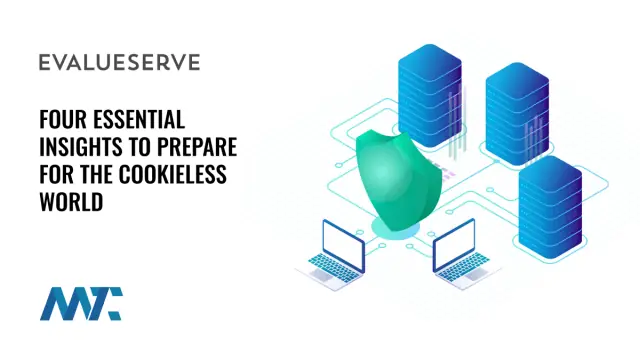Cookies were once the backbone of online tracking and targeting, and now they are crumbling under privacy concerns. Some web browsers already have strict cookie rules, while Google plans to eliminate third-party cookies by 2025. Pushed out by privacy regulations like GDPR and CCPA, these web trackers hold extensive information that qualifies as personal data, requiring compliance.
This change will heavily impact online advertising and ad targeting. However, it also empowers users with greater control over their privacy and data. Here are four key points to guide you into the cookieless horizon.
1. What Will Be The Impact On Data Collection?
This future brings a significant shift in data collection practices. Severely undermining essential tracking capabilities for user analytics, meaning that:
The absence of cookies blocks the monitoring of user behavior online, making it challenging to understand and analyze.
Cross-site attribution becomes nearly obsolete in this scenario, impeding the mapping of user journeys.
Businesses may struggle to accurately attribute conversions without cross-site attribution, potentially leading to misallocation of resources.
Vigilant monitoring of evolving privacy regulations will challenge retrieving ethical and actionable data to continue extracting meaningful insights from it.
It sounds like the ability to provide tailored content on a large scale is fading. Cookies are crucial for tracking visitors and enabling personalized content and ad targeting. What do marketers think will happen once they become obsolete?
In a recent survey conducted by GetApp it was revealed that:
2. So, How Do I Collect Data Now?
The new approach does not mean starting from scratch but improving existing methods to replace third-party cookies while adhering to data privacy regulations. It is not the “cookiecalypse”, it is more an invitation to innovate, securely collect insights and aggregate audience data without relying on third-party cookies.
Here are some lifelines to embrace it:
Zero-Party (0p) and First-party (1p) approaches, like contextual advertising, behavioral targeting, and universal IDs, are highly valuable due to their direct sourcing, ensuring accuracy and reliability. Organizations can boost user engagement by prompting users to share preferences (zero-party) or by enhancing app privacy policies for first-party data collection.
Vector database implementation offers to capture the meaning and context of information, simplifying AI-powered workloads and helping analyze user behavior to deliver personalized experiences without compromising privacy.
Limited API requirements to essential endpoints. A multifaceted approach to streamlining data collection, upholding data integrity, scalability, and efficiency by ensuring consistency, accuracy, and rapid response times. This practice avoids requests that are made solely because the protocol or system allows for it, without a genuine need or purpose. Additionally, APIs fortify data security and privacy through encrypted transmissions and controlled user access.
Third-party (3p) provider partnerships, in tandem with these approaches can significantly enhance organizational data strategies, using their own skills and tools to handle complex tasks, giving companies more time to focus on their main business activities. Nowadays, specialized tasks such as data analytics, cloud storage, and digital marketing can often exceed companies’ expertise, and it may be necessary to outsource these capabilities for operational excellence.
Customer data gathered via owned channels is highly valuable due to its accuracy and consent-based nature, forming a solid foundation for analysis and personalization. To maximize its potential, employ ethical data collection, precise segmentation, and personalized marketing. As reliance on alternative data sources grows, focus on effective data collection and integration while addressing privacy concerns.
When handling data, even with third-party outsourcing, you remain responsible. Mitigate risks by thoroughly assessing third-party providers’ security measures, compliance, track record, contracts, and data handling practices.
3. Is There A Safe Data Management Tool In The Cookieless Future?
Yes. The rise of data clean rooms as a privacy-focused solution in marketing has led to a clean room boom, with companies like Amazon and Disney joining Google in offering their own. Neutrality and transparency are essential for businesses seeking an impartial option.
A strong clean room should enable collaboration with any partner, provide clear attribution methods, and integrate seamlessly with trusted parties without extra IT burden. This ensures data security and privacy; crucial as third-party cookies decline.
Data clean rooms allow marketers to merge first-party and third-party data securely, improving targeting accuracy and enriching customer insights.
Here’s how they can revolutionize advertising and marketing:
Consumer Insights: By incorporating high-value signals from partner brands, data clean rooms offer comprehensive insights into customer behavior, enabling tailored experiences that match audience needs and preferences.
Data and Model Enrichment: Access to diverse datasets in data clean rooms fuels the development of machine learning models, driving personalized offers and recommendations that resonate with customers, fostering engagement and loyalty.
Advanced Segmentation and Activation: Insights from data clean rooms facilitate targeted audience creation for activation across channels, ensuring messaging relevance and privacy protection while enabling prompt and effective consumer outreach.
Optimization and Measurement: Granular analytics in data clean rooms provide accurate insights into campaign performance metrics, empowering marketers to fine-tune investment strategies and maximize ROI through data-driven decision-making.
4. How To Thrive In The Cookieless World?
Thriving in a cookieless future requires leveraging alternatives like first-party data, clean rooms, and contextual targeting for precise segmentation and tailored marketing. This shift promotes transparency and user empowerment, building customer trust and rapport. Educate customers on the value of data sharing to enhance their experiences.
To prioritize privacy and compliance, use privacy-enhancing technologies and data anonymization to protect user privacy while extracting insights. Transparency and user consent should be central to your data practices.
Implement robust data management systems and analytics platforms to optimize data integration and analysis. This will allow for effective data analysis and strategy refinement across all touchpoints, ensuring long-term success.
Finally, adopt a test-and-learn approach. Experiment with strategies, technologies, and methodologies to identify what works best for your organization and audience. Be ready to iterate and adapt, welcoming the cookieless era.
©2024 DK New Media, LLC, All rights reserved.
Originally Published on Martech Zone: Four Essential Insights to Prepare for the Cookieless World

